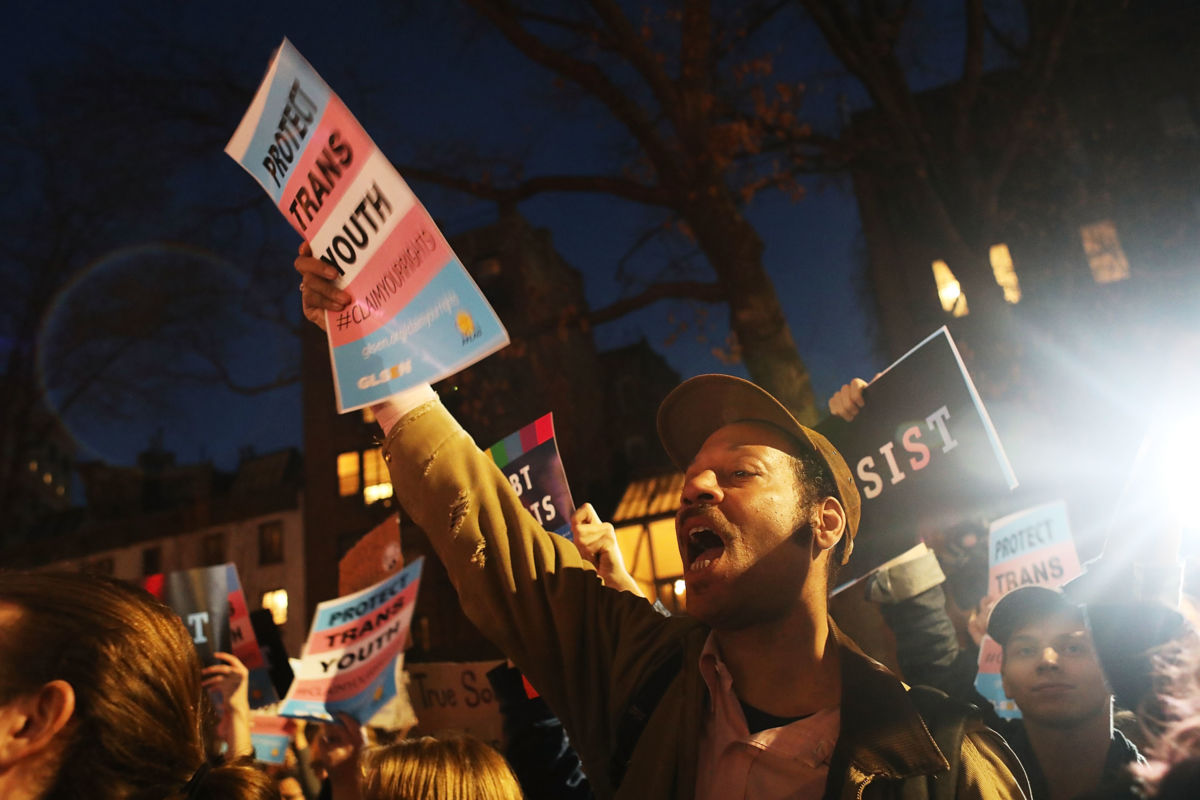For most intersex and trans people in the US today, the very process of governmental recognition is simultaneously a process of erasure. This was true even before the Trump administration’s latest threat to narrowly define gender as a biological, immutable condition determined by genitalia at birth, and it will only be exacerbated if the proposition moves forward. In partnership with the Department of Education and the Department of Human and Health Services, the Trump administration seeks to genetically test trans students and require this documentation for college and federal student aid applications.
Our lived experience as Black nonbinary transmasculine people illustrates this process of erasure. We both elected to change our gender markers from female to male, which was not only expensive, tedious and time-consuming, but required us to discard core parts of our narratives in order to become “legitimate” to the state. Our experience is not uncommon, as many trans people must jump through similar bureaucratic hoops to be recognized by the state.
Trans people must present linear narratives before courtrooms and state and federal officials in order to obtain the necessary documents to participate in public life. Yet the US government has never fully recognized trans people, particularly those without proximity to wealth and whiteness. The trans rights movement’s conflation of tolerance and limited state recognition with liberation has prioritized the most privileged members of our community and left the most marginalized trans people vulnerable.
As working-class students at the nexus of Blackness and transness, our decision to change our gender markers was not a desperate appeal to the government for recognition, but a necessary safety measure. The police state has a track record of surveilling Black and trans communities, and as members of both, we know the threat of state-sanctioned violence only increases when “outed” by identification documents that do not match our current gender presentation.
Despite increased coverage of trans people, mainstream media have never engaged with trans communities to adequately advance our liberation. The New York Times headline “’Transgender’ Could Be Defined Out of Existence Under Trump Administration” first alerted many in our community of the latest assault. The transgender movement imagined by The New York Times presents the same protagonist as transgender rights activists — a white trans person. The photograph the Times article features frames a white trans youth as the archetype of the transgender person who faces existential threats.
Black transgender people are erased both inside the trans community and within Black communities which view transness as a white convention. In particular, Black trans bodies continue to be invisibilized as the criminal legal system places trans women in male prisons, trans prisoners in solitary confinement and keeps poor trans people in jail. The premature death of large parts of our community to the carceral state confirms the insufficiencies of visibility to liberate.
By sanitizing the public’s image of trans people, the material realities that most trans people of color face are obscured. The recurring violence against trans people perpetuated by the Trump administration negates the viability of tokenization as a tool of political expediency. The minimal acceptance of trans people has weakened the trans movement, leaving us unprepared to deal with the particular violence of the current administration.
While insulated by our undergraduate institution — a privilege compared to the realities of many trans people of color — our campus’s unresponsiveness speaks to the rest of society’s inaction when trans lives are on the line. To see if our experience was an anomaly, we conducted an informal Twitter poll targeted at US transgender students. Out of the 189 respondents, 81 percent indicated a parallel experience to our own with no institutional response to the memo. The complete lack of administrative response within schools, soon to be the battlegrounds where this policy is tested, is a testament to institutional indifference toward intersex and trans students. In times of political crisis, higher education has historically been a site to resist fascism. To preserve this legacy, these institutions must speak out and announce a clear politic that supports all trans people.
Editor’s note: This article was updated to eliminate a reference to Pitzer College remaining silent on the issue. The College, in fact, sent a a statement of support to the college community on October 30.
Join us in defending the truth before it’s too late
The future of independent journalism is uncertain, and the consequences of losing it are too grave to ignore. We have hours left to raise the $12,0000 still needed to ensure Truthout remains safe, strong, and free. Every dollar raised goes directly toward the costs of producing news you can trust.
Please give what you can — because by supporting us with a tax-deductible donation, you’re not just preserving a source of news, you’re helping to safeguard what’s left of our democracy.
